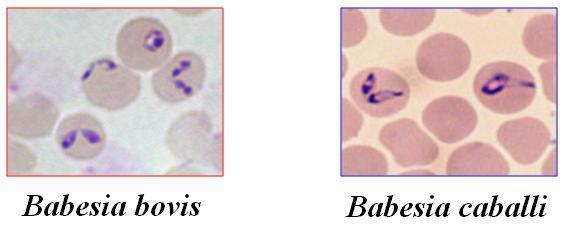Full-Babesia
Naoaki Yokoyama1, Yuichiro Hara2, Hidemi Watanabe2, Hiroyuki Wakaguri3,
Yutaka Suzuki3, Sumio Sugano3, Junichi Watanabe4, Ikuo Igarashi1
(
1National Research Center for Protozoan Diseases, Obihiro University of Agriculture and Veterinary Medicine.
2Laboratory of Genome Sciences, Graduate School of Information Science and Technology, Hokkaido University.
3Department of Medical Genomics, Graduate School of Frontier Sciences, The University of Tokyo.
4Department of Parasitology, Institute of Medical Science.
)
We plan on publishing the comparative genomic analysis of babesia in a peer-reviewed journal as soon as possible.
Permission should be obtained from Junichi Watanabe before publishing papers based on systematic use of our data.
1-1 Full-Babesia
Babesia is an intra-erythrocytic protozoan parasite and is transmitted by ticks. Babesiosis is a well-recognized disease of veterinary importance in cattle, horses and dogs. B. bovis and B. bigemina are the major causative agents of bovine babesiosis and both parasites follow similar life cycle patterns in adult Boophilus spp.
Babesia (Theileria) equi and B. caballi are causative agents of equine piroplasmosis. Among erythrocytes, Babesia equi can be from spherical to ovoid to the characteristic 'Maltese-cross' form.
Babesia caballi is mostly seen as two pear-shaped merozoites joined at their tips. During the asexual growth cycle in a natural host, the merozoites internalize the host erythrocytes via multiple adhesive interactions of several protozoan molecules with the host cell components.
Thus, the parasites destroy the infected erythrocytes, which results in severe clinical symptoms, such as high fever, anemia, and hemoglobinuria, in the infected hosts. Babesiosis causes not only serious health problems in domestic animals but also huge economical burdens in the livestock industry.
Eradication would at first appear to be the ideal approach to control babesiosis; however, there have only been relatively few attempts with limited success over the years. Monitoring and surveillance can provide an epidemiological picture of the disease in terms of incidence/prevalence directed to the control of the disease.
Research on babesiosis, such as epidemiological studies and the development of diagnosis, vaccines, and integrated control methods, should be carried out. Therefore, a better understanding and information of basic molecular mechanism(s) during the asexual growth cycle may accelerate the development of more effective control strategies for babesiosis in the future.

1-2 Life cycle of Babesia
|
|